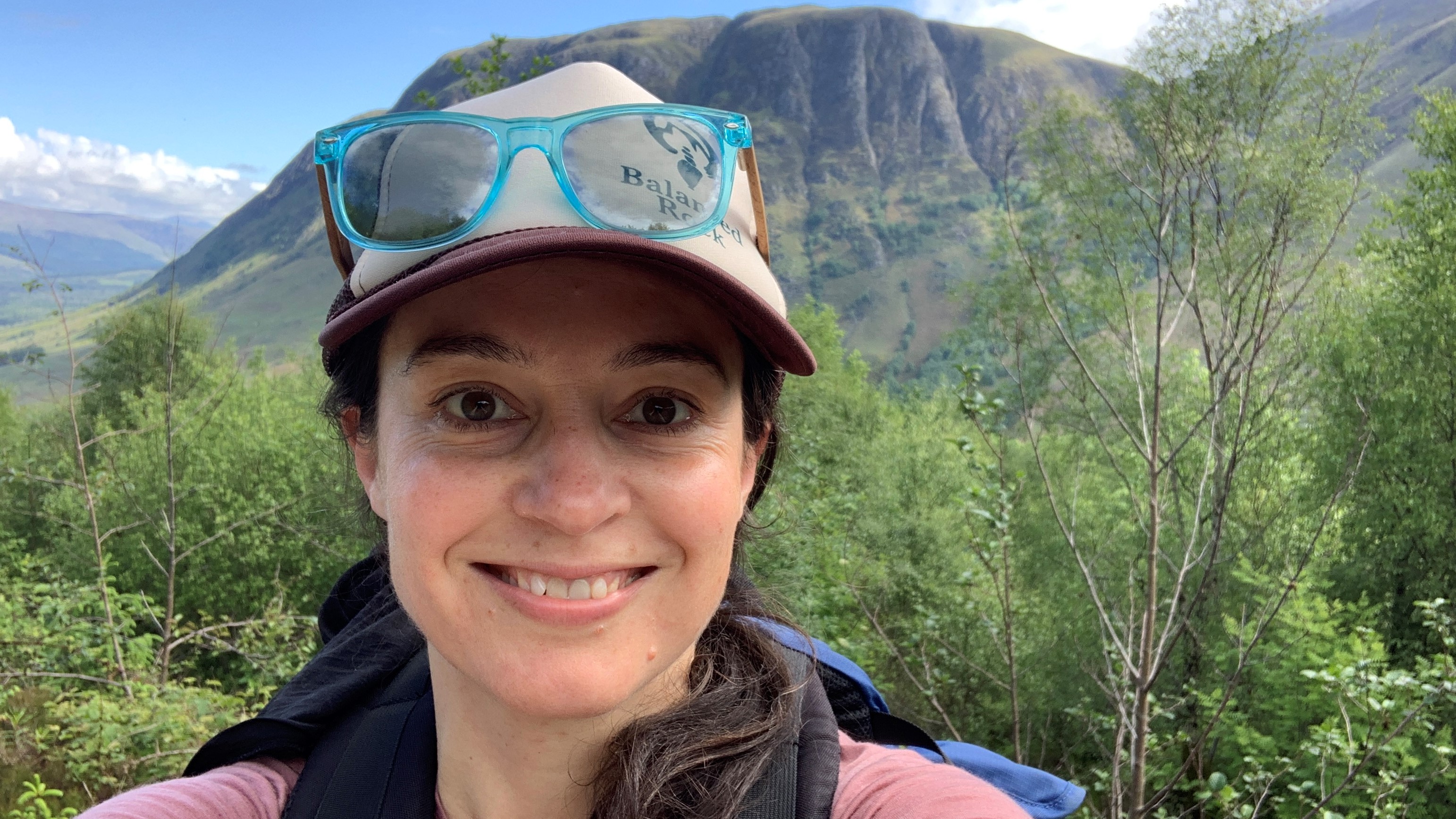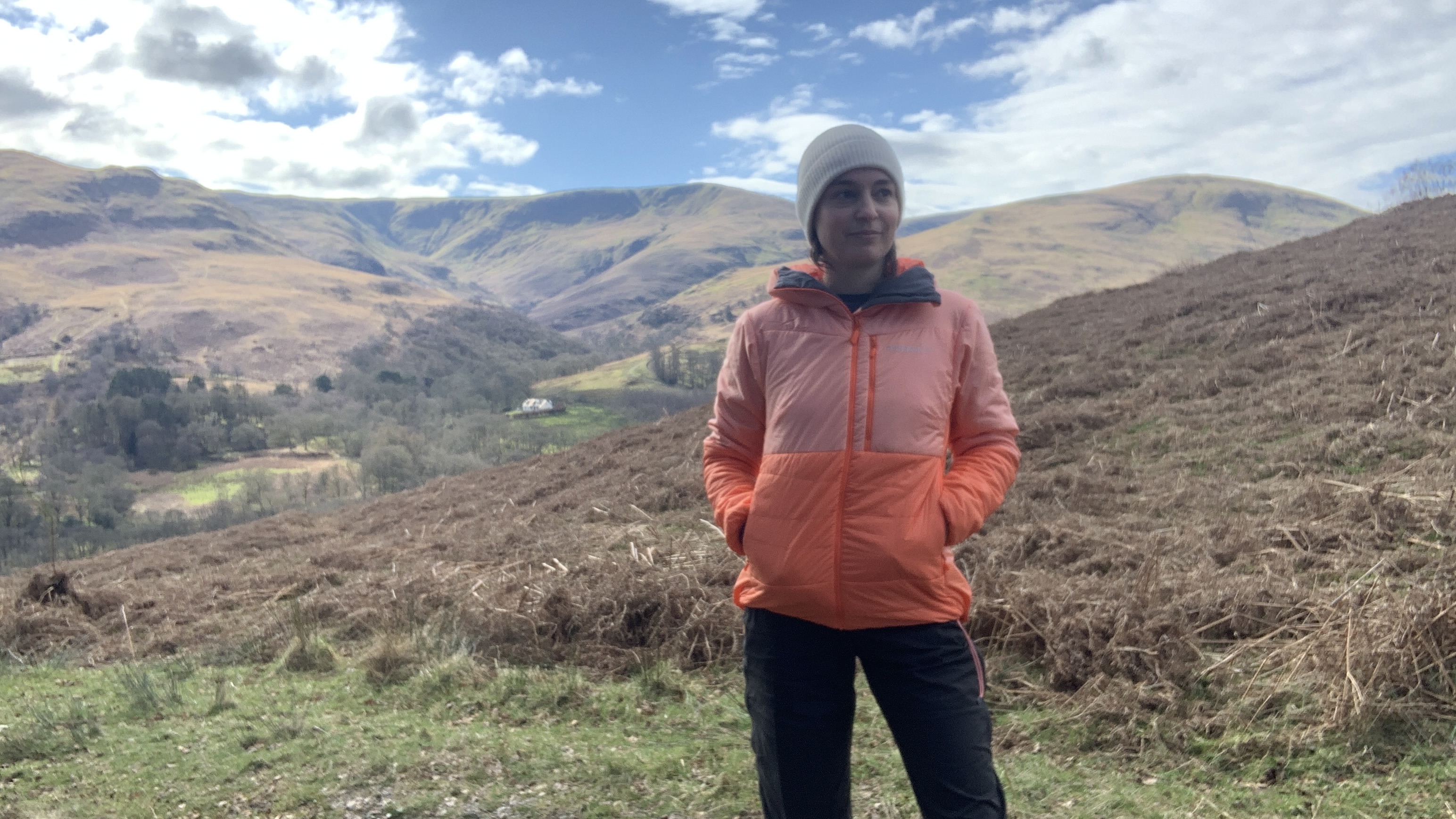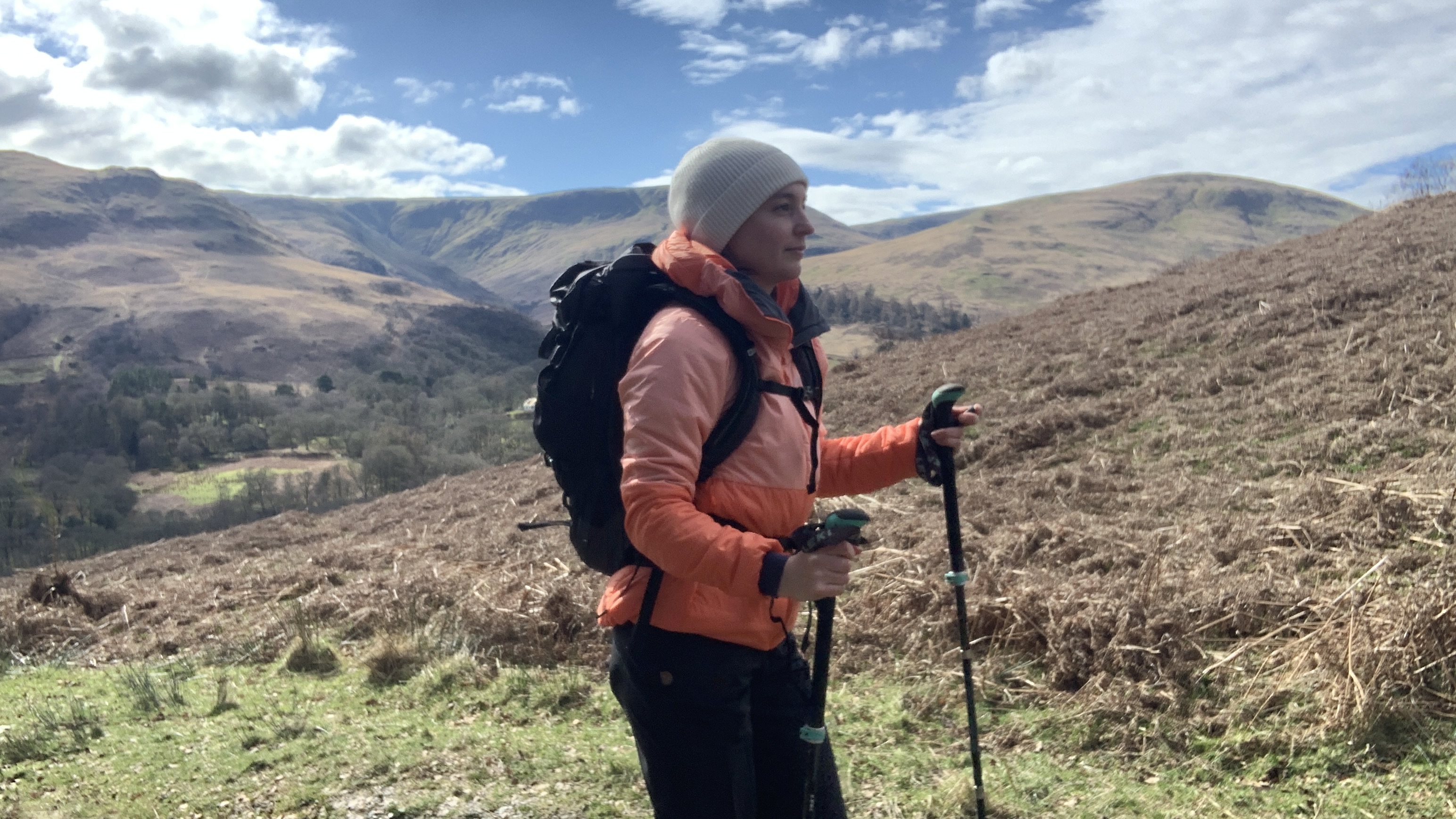Advnture Verdict
It used to be that for warmth, you needed bulk, but this puffer jacket manages to pack some serious heat into a featherlight packet. A windproof shell shields you against a strong breeze without sacrificing breathability while soft fabric feels fabulous against your skin. Add in the helmet-compatible hood and eco creds and we can't find anything to argue with (except maybe the price).
Pros
- +
Excellent warmth-to-weight ratio
- +
Breathable and windproof
- +
Helmet-compatible hood
- +
Plenty of pockets
- +
Adjustable hem and cuffs
- +
Articulated elbows
- +
Drop tail
- +
Recycled materials and PFC-free DWR
Cons
- -
Pricey
You can trust Advnture
Meet the reviewer

Julia Clarke is a staff writer for Advnture.com and the author of the book Restorative Yoga for Beginners. She loves to explore mountains on foot, bike, skis and belay and then recover on the the yoga mat. Julia graduated with a degree in journalism in 2004 and spent eight years working as a radio presenter in Kansas City, Vermont, Boston and New York City before discovering the joys of the Rocky Mountains. She then detoured west to Colorado and enjoyed 11 years teaching yoga in Vail before returning to her hometown of Glasgow, Scotland in 2020 to focus on family and writing.
Norrona falketind thermo60 Hood: first impressions
Named for the famous Norwegian mountain, the Falketind is built to keep the cold weather at bay without weighing you down when you're exploring lofty summits. Using their thermo60 synthetic insulation, Norrona has created a synthetic puffer jacket that's ultralight, packable and will keep you warm even if you get wet.
The shell material, made using aeroDownproof face fabric, helps keep you warm by effectively blocking the wind and it's also buttery soft against the skin, which makes this jacket feel extra luxurious. However, it's got loads of technical clout, providing breathable insulation for steep climbs and a performance-oriented fit and features.
• List price: $359 / £269
• Gender specification: Men's and women's sizing available
• Sizes: Men's S - XL / Women's XS - L
• Weight (women's small): 10.9 oz / 310 g
• Materials: 100% recycled nylon face, Thermo insulation
• Colors: Hawaiian surf/Indigo night, Caviar black, Olive night/Olive dra, Orange alert/Peach amber, Indigo night blue,
• Best use: Hiking, camping, winter sports
The technical fit of this jacket delivers a drop tail and adjustable hem to keep a cold wind out, articulated elbows to keep you mobile when you're scrambling and a helmet-compatible adjustable hood. There two roomy zipped hand-warming pockets, a Napoleon pocket for valuables and an inner mesh pocket where you can stash your phone to keep it from dying in cold weather.
With recycled materials used in the shell and insulation and a PFC-free DWR, this jacket is bluesign approved and while it's priced at the upper end of synthetic puffer jackets, we think it's worth the expense. While we've mostly been testing it out on winter hikes, it's versatile enough for skiing, mountaineering, cold days on belay and chilly nights at camp.
Norrona falketind thermo60 Hood: in the field

Now that we're in our ninth straight month of winter here in Scotland, I've given up trying to beat the weather and have accepted that I need a really good puffer jacket if I'm going to be comfortable outdoors. I received a sample of the Norrona Falketind from the folks at Trekkit to test on my late winter and early spring hikes around some of my favorite Munros and smaller Scottish peaks for a couple of months (and wearing it to work from home to be honest).
Here’s how it performed:
Fit and comfort
I tested a small which is the size I usually go for and this feels perhaps slightly roomy, but once I cinch the elasticated cord I actually think it's perfect, since that keeps the breeze out but there's still plenty of room for layering and movement. The drop tail means I get a little extra protection around the hips and, for once, the sleeves aren't too long which makes this easier to wear with gloves. The collar zips up to protect my jaw and chin but isn't so high as to be annoying.
All the latest inspiration, tips and guides to help you plan your next Advnture!

Warmth and breathability
If you're bothering with a puffer jacket for outdoor pursuits, you want two things from it: warmth and breathability. This jacket delivers splendidly on both counts.
From an insulation point of view, the Thermo insulation is such that I feel better the second I pull it on, which means I can actually afford to get a little chilled on a hike. Some of my lightweight puffer jackets such as the North Face Thermoball 50/50 let a little breeze through, but the windproofing of the shell is really effective, which is important in Scotland, but also any high summit. Though I'd never hike in Scotland without a waterproof jacket, it has a DWR treatment and it holds off a light sprinkle, without me getting chilled in the process.
Despite the incredible warmth, this jacket has proved really breathable and when I wore it up a steep climb (2,400 feet over two miles), I didn't need to take it off which felt great. Obviously, it would be too warm for a hot summer's day, but any hiking where I actually need insulation, this would be my go-to.
Weight and packability
I'm accustomed to having to take on a certain amount of weight and bulk in order to get this much warmth, so I was really amazed to feel how light this jacket is. To date, the North Face Thermoball has been my lightest puffer (counting down and synthetic) but this one has it beat by 140 grams.
If you want to pack, it stuffs inside its own inner mesh pocket to smaller than the size of a Nalgene, so it's definitely packable, though it's been too cold here for me to actually take it off.

Durability and value
The downside of puffer jackets is that the shell fabric can be really fragile and while I wouldn't go and rub up against a thorny bush in this, I'd say the shell is relatively robust and I don't see any degradation where my backpack rubs, yet.
It's not a cheap jacket and if you're not in serious need of a lightweight puffer, I can see why you'd question forking out for this, but if you need a versatile, warm layer built for outdoor adventures, it's an excellent choice.
Norrona falketind thermo60 Hood: the bottom line
The Falketind Thermo60 Hood delivers on all fronts: warmth, breathability, weight, storage and adjustability. It's also got great eco creds for those of you looking for a lower-impact purchase. That said, it's a pricey jacket and if you're on a budget, it's worth checking out the Kathmandu Heli R Hooded Down Jacket for a lightweight warmer at a good price.
Julia Clarke is a staff writer for Advnture.com and the author of the book Restorative Yoga for Beginners. She loves to explore mountains on foot, bike, skis and belay and then recover on the the yoga mat. Julia graduated with a degree in journalism in 2004 and spent eight years working as a radio presenter in Kansas City, Vermont, Boston and New York City before discovering the joys of the Rocky Mountains. She then detoured west to Colorado and enjoyed 11 years teaching yoga in Vail before returning to her hometown of Glasgow, Scotland in 2020 to focus on family and writing.


